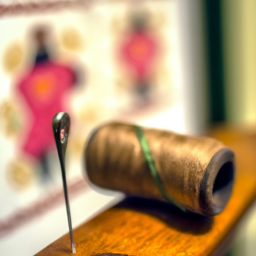
History of Sewing by Hand

Sewing by hand is an ancient craft that has been practiced for centuries. It is an integral part of human history, with evidence of hand-sewn garments dating back to prehistoric times. These early sewing techniques were essential for creating clothing, shoes, and shelter, enabling humans to adapt and survive in various environments.
The history of sewing by hand can be traced back to its earliest origins in Egypt around 5,000 B.C. Archaeological findings have unearthed needles made of bone and horn, as well as threads spun from plant fibers. The skill of sewing was crucial for the development of garments that provided protection and warmth.
The ancient civilizations of Mesopotamia and China also contributed significantly to the evolution of hand-sewing techniques. The use of intricate designs and decorative stitching can be found in the archaeological remnants of these societies. Sewing by hand was not only functional but also a means of expressing cultural identity and social status.
During the Middle Ages, sewing techniques continued to advance, becoming more refined and complex. Monks and nuns in European monasteries played a crucial role in preserving and advancing the art of hand-sewing. They developed new stitching methods and embroidery techniques that adorned religious garments, tapestries, and other textiles.
It wasn’t until the 14th century that needlework and sewing began to be seen as feminine pursuits. Women from noble families were expected to possess sewing skills, which were considered essential for maintaining household order and creating fashionable clothing. The rise of the European Renaissance further elevated the status of sewing, leading to the establishment of embroidery guilds and the development of intricate stitching patterns.
The Industrial Revolution of the 18th century brought significant changes to the practice of sewing by hand. The invention of the sewing machine revolutionized the textile industry and made mass production possible. Although the introduction of sewing machines reduced the need for hand-sewing, it did not eliminate the craft entirely. Hand-sewing remained vital for intricate details, repairs, and personal projects.
Today, sewing by hand has evolved into a cherished craft and creative outlet for many individuals. While sewing machines offer efficiency and convenience, the art of hand-sewing continues to be valued for its precision, uniqueness, and connection to tradition. From hand-stitched quilts to delicate embroidery, the history of sewing by hand is a testament to human ingenuity and the desire for self-expression.
Whether you are a seasoned seamstress or a beginner enthusiast, sewing by hand allows you to connect with history, culture, and your own creativity. So pick up a needle and thread and continue the tradition that has shaped civilizations for thousands of years.




